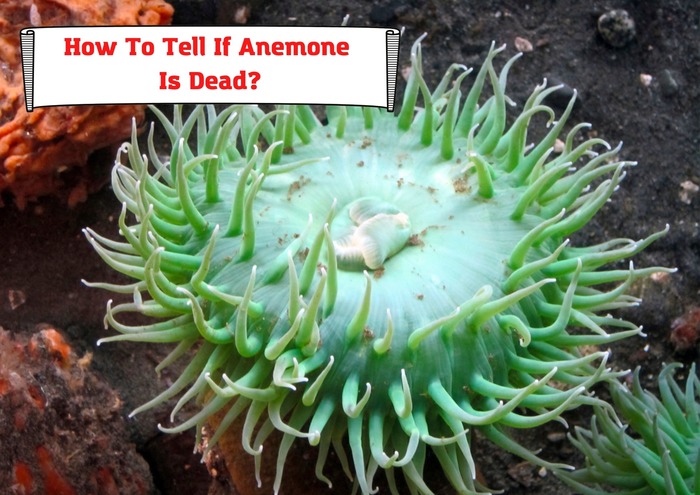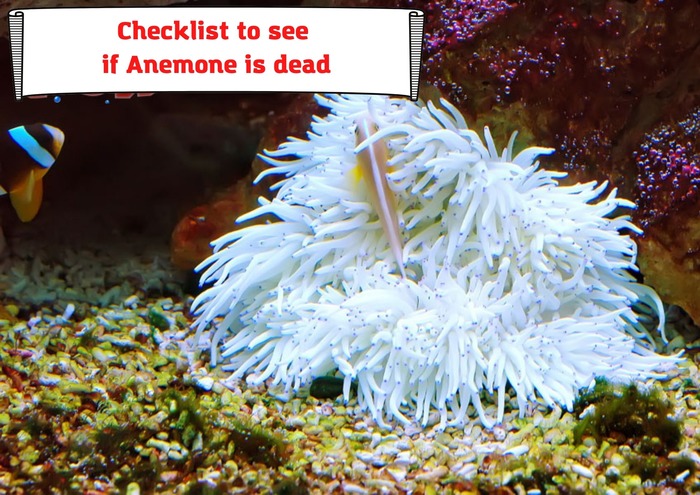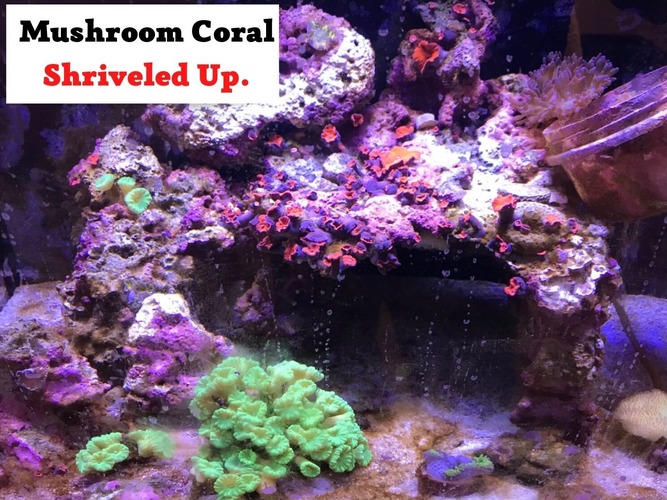
Anemones are colored creatures that will definitely grab anyone’s attention and become their favorite in no time. These invertebrates in the aquarium can look wonderful, but they pollute the entire tank once they die. So, no matter how close you had been to your anemones, you will not like to risk them dying in the tank.
You might regard us cruel, but this is the reality as dead animals can pollute the entire tank’s environment in literally no time. Besides, you cannot risk the life of the other animals, so it is essential to know for sure if your colorful creature is on its last breath.
How can you tell that your Anemone is dying? A legit question. This is why we are sharing a checklist including factors that will guide you further about your pet’s condition. In this article, we cover:
- Factors that might contribute to Anemone’s death
- How dead Anemone can impact the tank
- Checklist to see if your Anemone is on the last stage
What factors can contribute to the death of Anemone
You should know the factors that can contribute to the death or illness of your Anemone. So, you can take all the steps to increase the life span, right? So here are they.
Water Quality
Anemones do not exist in colonies like the other corals. So, these animals can quickly feel any changes in the water. Being sensitive to water changes, you can regard them similar to the other fish in your tank that needs optimal care.
Light
Another factor that can contribute a lot to their health is the lighting in the aquarium. These animals need strong lighting. You cannot expect these creatures to live or thrive without properly managing this important factor.
Placement in the tank
One of the other factors you must give high importance to is their placement in the tank. They do not stick to one position initially. You can see them moving around for some time. Until they do not settle, you have to ensure that they don’t get onto your filters or other aquarium equipment. Besides, setting near other corals will also not be the best choice, so you’ll have to consider moving them for better growth. Usually, it is not the Anemone in danger in such a situation but the other animals.
Non-settled tank
Usually, it is advisable that you must wait for at least 6 months before putting your Anemone in the tank. They require an optimal environment, and you can only make sure once your aquarium is in the working for some time. If you settle it early, there is a significant chance that it will not thrive properly.
Checklist to see if Anemone is dead

In any case, you cannot rely on a single factor from the list to determine the life and death matter of living organisms, especially when it is your pet. So, it is better to go through the factors five in the list one by one to find if your little pet is dying or not.
There can be instances where your pet might show one or more signs as dead, but actually, it is not. So, our recommendation here is never to use a single factor to determine the state of your Anemone.
Here’s the list that we have compiled containing different factors to tell if your Anemone is dead or about to die. Pay close attention to them.
Loose basal disc
Your Anemone is attached to the rock with the basal disc. Usually, it has a firm grip that you cannot loosen without applying considerable force. However, when your Anemone is dying, it will lose its grip on the rock, and you can easily observe the loosening of the basal disc or the foot.
In some cases, they completely lose their hold on the rock, and you can see your Anemone tumbling from one direction to the other. The tumbling Anemone is a sure shot sign that you should remove it from your aquarium right on the spot.
Pouring out mouth condition
Have a look at the mouth of your Anemone. In normal cases, the mouth that looked refreshing with its moving body will now be weird-looking. Most aquarists explain this mouth condition as invert. You’ll observe that the inside of the animal is coming out of the mouth. Yes, you might not like this condition of your pet.
But to ensure that Anemone is dead, it is essential to check for these signs. You cannot ignore it too long. So, why waste a lot of time in the process? The body you have to remove a few hours later is better to remove it now.
Deflated tentacles
Anemone is a living being to deflate its tentacles for some part of the day. But this should not be the case for the extended period. It isn’t typical for this species. If you observe that the tentacles of an Anemone remain deflated for 3-4 days, then you must be worried about its health. Such a situation usually occurs when your animal is ill or is in the process of dying. If you look for the other factors in the list, you might find it already dead.
Size of the Anemone
You might be wondering how it could be included in the checklist. But that is true. You will find your Anemones smaller in size if they are dying. You don’t have to compare the size of your Anemone with the average size of the entire secures; rather, comparing it with the size of the same Anemone will reveal the changes in the size. So, if your Anemone is looking a bit smaller than the original size that your animal used to have, then it is in problem.
Sloughing off tissues
You can examine your pet’s body as another point in the checklist to see if it is dying or is already dead in the tank. When you touch a healthy Anemone, its tissues will not leave the body readily, but if you touch an ill Anemone, you’ll feel the tissues sloughing off. So, if you can’t say it is entirely dead, you should know that it is terminally ill and can die at any moment.
Losing color
One of the reasons you have Anemone in your tank is the bright color of the animal. But this is the case when your animal is healthy. But when it loses its life, you’ll see it lose its color. It will no longer be the same brightly colored animal that you were in love with once. So, if that is the situation, you can consider that your pet is at the last stage of its life.
The loss in color is because of the reduction in their ability to photosynthesize. These animals photosynthesize using Zooxanthellae, so when dying, it’s their tissues that cannot work properly. If the water quality is not appropriate, adjusting the water quality immediately can bring it back; otherwise, there is not much scope.
Color of the aquarium water
Lastly, the color of the aquarium water provides a check strong enough to declare the death of the Anemone. If the color of the water is milky, and a lot of the above conditions are also satisfied, then your Anemone has already died, and there is no question about it. You’ll have to remove its body immediately so that it will not pollute the water further.
Besides, make sure to check the water parameters and perform the water change if necessary.
Summing up
Anemones are beautiful animals. But like every other living being, they die. Even if you have cared for them greatly, there will be a day when your Anemone will no longer be with you. So, as an aquarist, you cannot let the body of the dead Anemone stay in the tank for long as it will be dangerous for maintaining the healthy life of the other animals.
Be mindful, perform the checklist as mentioned in this article, and perform the necessary steps to keep your aquarium and its species up and healthy.
- Pleco Not Eating. Main Reasons Your Pleco Is Starving - February 21, 2022
- Foxface Fish Sting: Any Danger? And What To Do To Relieve Pain? - February 20, 2022
- White Stuff Coming Out Of Snail – Dangerous? Should You Worry About It? - February 19, 2022




